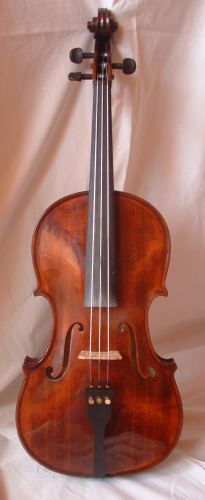 | ||
Other names Hungarian: Háromhúros brácsa, Estonian: Kolmekeelne vioola Hornbostel–Sachs classification (Composite chordophone sounded by a bow) | ||
A kontra is a Hungarian (Hungarian: háromhúros brácsa, ‘three-stringed viola’), Romanian, Slovak and Romani instrument common in Transylvania.
Contents
Construction
The kontra is constructed much like the classical viola, with two major differences. First, there are only three strings instead of four. Second, the bridge is flattened, allowing a musician to play all three strings at once.
Tuning
The kontra is tuned like a viola, though lacking its low c string: g - d' - a' and frequently the a' string is replaced with a second g string tuned to a, a major second above the g, in a form of re-entrant tuning.
Technique
Due to the flattened bridge, a kontra is not as capable of playing melody lines as a viola. Rather, the standard method of play is to play double stops and three-note chords and let the fiddle play melody lines.
Ensemble playing
The kontra has a defined role within dance band music. Its range lies between that of the fiddle or Vioara cu goarnă on the high-end and the double bass on the low-end. Many Romanian and Hungarian bands also feature the cimbalom or citera, clarinet, accordion, and Ütőgardon or cello.
